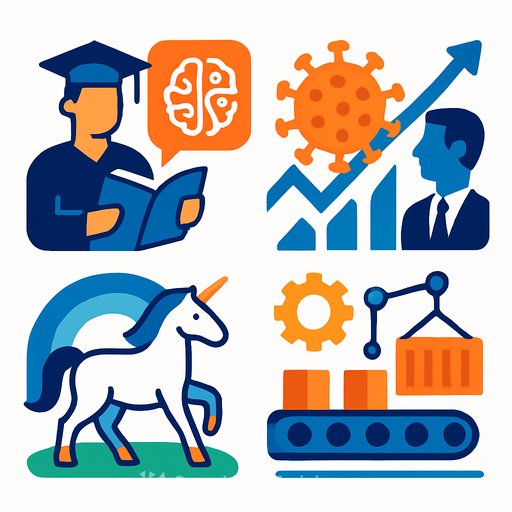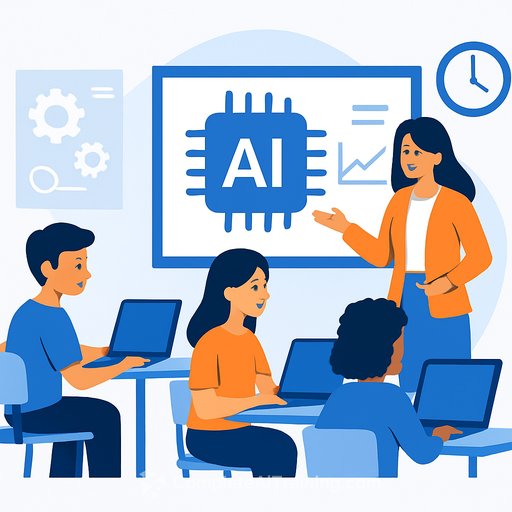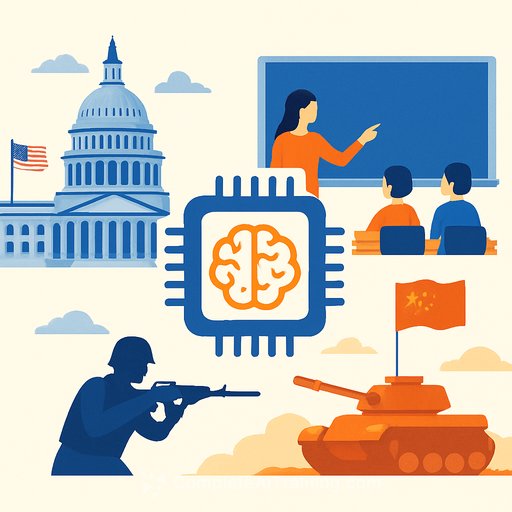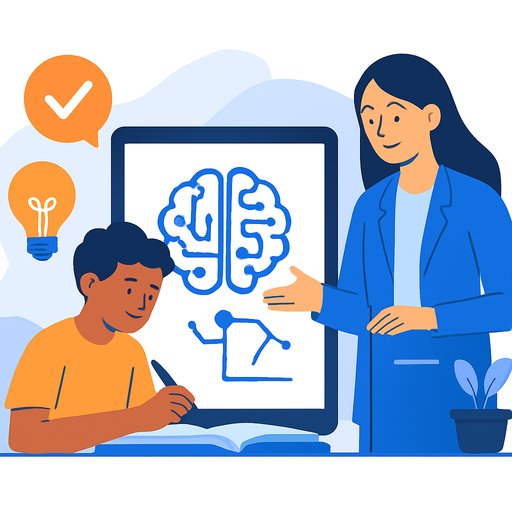AI, Supply Chains, and Private Markets: What Educators Should Do Next
Artificial intelligence is forcing higher education to raise its standards. Arizona State University's president, Michael Crow, puts it plainly: if AI can ace your test in seconds, the test was too simple. The fix is to increase question complexity, assess reasoning, and expect more from students.
AI is a powerful analytical tool - a hyper-speed calculator drawing from digitized knowledge. It can't teach values, grit, creativity, or lived judgment. That's still on us. The opportunity is to use AI to accelerate learning without outsourcing the thinking.
Redesign Assessment For An AI-Native Campus
- Move from recall to reasoning. Grade the thinking process and the quality of evidence, not just final answers.
- Require transparent workflows: prompts used, sources checked, iterations made, and a short oral defense.
- Use closed-book moments for baselines. Use AI-augmented projects for applied mastery.
- Design assignments AI can help with, but not do for the student (e.g., integrate datasets, field interviews, or staged prototypes).
What AI Can't Teach
As Crow emphasizes: AI won't teach innovation, creativity, or grit. It won't give students lived experience or values. Build these through teams, real stakeholders, deadlines that matter, and reflection. Let AI speed analysis; let people make judgments.
Research Speed, Reimagined
ASU reports dozens of research groups using AI to tackle previously intractable problems - from managing river systems to advanced chemistry. One internal study suggests work equivalent to a genetics dissertation could be executed in a fraction of the traditional timeline. That doesn't make doctoral training obsolete; it reframes it. The new bar is 10x more experiments, deeper critique, and better validation.
Graduate Outcomes And Shifting Majors
Crow says undergraduate outcomes remain strong, with the vast majority employed or in graduate school within a year. Students are adjusting: a slight decline in pure computer science majors, and an uptick in double or triple majors, analytics, and supply chain. One theme: "English majors who code" are landing well because they can think broadly and ship product.
Open Doors, Then Raise Standards
ASU is piloting AI-enhanced support to help applicants who aren't yet college-ready get qualified. Those who earn their way in often outperform. Equity isn't just access; it's high expectations with better tools.
Supply Chains As A Teaching Case For AI
Logistics shows what AI can do outside the classroom. One industry leader outlines three layers of impact: automate manual tasks across a fragmented ecosystem, optimize networks to reduce empty miles, and bring AI into the physical world through autonomy. That mix reduces cost, improves resiliency, and opens new business models.
Real Deployments Your Students Should Know
- Port of Los Angeles: A shared data platform lets stakeholders see cargo up to 40 days before arrival, plan labor and equipment, and use predictive analytics to manage disruptions. Geospatial simulations help reroute traffic during infrastructure work. This is applied data literacy at scale. See Port Optimizer
- Fleet Telematics: A major operator reports downloading data nightly from ~200,000 vehicles and capturing billions of data points per year. Use cases: maintenance, fuel efficiency, uptime, and safety. That's a living lab for data engineering and analytics courses.
Bring It Into Your Classroom
- Give students real logistics datasets and ask them to reduce empty miles or dwell time. Grade decision quality, not just model accuracy.
- Have them build a "chat interface" for a small operational dataset. Force them to define source reliability and actionability.
- Run a crisis drill: a port delay or tariff change hits your supply chain. Students present a 48-hour mitigation plan with trade-offs.
Tariffs And Small Economies: Teach The Ripple Effects
Trade policy isn't abstract. When major economies raise tariffs, smaller exporters feel it fast. Orders swing, factories idle, and local jobs are at risk. Use a country like Lesotho as a case study to show how a policy aimed at one region can hit a distant supplier through buyer behavior and sourcing shifts.
- Map a product's tiered suppliers and ask students to quantify who bears the cost at each tier.
- Run scenarios: tariff shock, currency swing, or port congestion. What changes in contracts, inventory, or routing?
Unicorns Are Staying Private Longer: Update Your Finance Curriculum
Large startups are avoiding IPOs because private capital is abundant, disclosure burdens are high, and founders prefer control in volatile markets. For students, that means more roles in private equity, growth funds, and late-stage private ops - and different expectations for liquidity and governance.
- Teach secondary markets, tender offers, and late-stage valuation.
- Have students model cash needs and dilution under private vs. public paths.
Campus Action Plan
- Set clear AI-use policies by assignment type. Share exemplars of acceptable vs. unacceptable use.
- Train faculty fast. Short workshops on prompt design, source verification, and AI-assisted feedback loops help now. If you need structured options, see curated AI courses by job role: Complete AI Training
- Code for everyone. Offer free intro to Python and SQL to all majors. Pair it with domain projects.
- Portfolio-first assessment. Students ship artifacts with data, decisions, and reflections.
- Industry labs. Partner with a port, hospital, or utility to co-own datasets and capstones.
- Equity with rigor. Use AI tutoring and bootcamps to lift underprepared students into credit-bearing work - then keep expectations high.
- Research guardrails. Document AI use in methods, require reproducibility, and run bias checks.
- Career services refresh. Add private markets, supply chain analytics, and autonomy ops to advising and employer outreach.
Helpful References
- AI in Education primers for a quick onboarding path
- UNESCO: AI and Education policy guidance for governance conversations
The throughline is simple: raise the bar, make learning applied, and treat AI as an amplifier for human judgment. Your students will meet the standard you set.
Your membership also unlocks:






